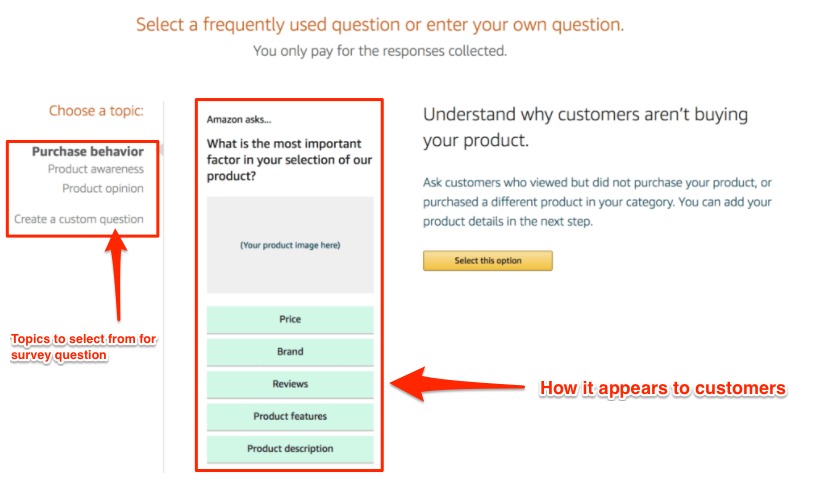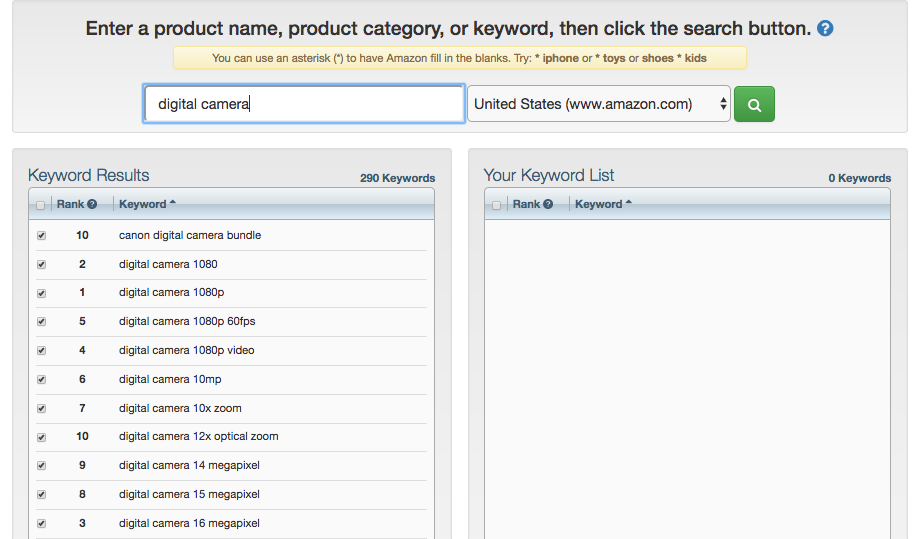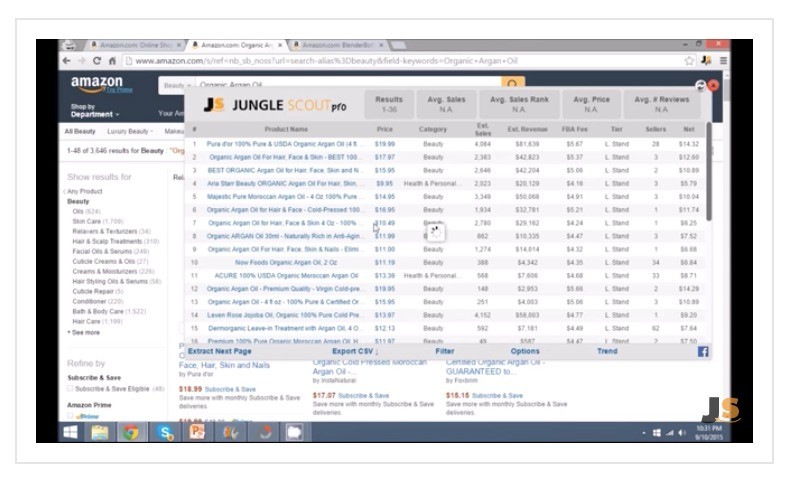The best way to beat the competition is to get to know them from their
How much are they selling?
What is their pricing history?
What product variations do they offer?
You can pretty much guarantee that your Amazon competitors are listed here. In 2020, third-party Amazon sellers were responsible for more than 50 percent of all Amazon sales.
By using the available Amazon tools for product searches, you can conduct a detailed comparative analysis between your business and another e-commerce competitor.

Don’t let the words “detailed comparative analysis” scare you: Using these Amazon tools is as simple as installing and looking at some facts and figures.
These programs let you go beyond what any basic Amazon search can accomplish (because how much time do you really want to spend scanning every customer review).
Employing these Amazon tools saves time while providing valuable and incomparable insight for any e-commerce marketer.
Whether that’s planning out your pricing strategy or figuring out what to stock, Amazon is the perfect place to look for ideas.
Getting ahead of the competition means getting to know them – and where better to gather intel than the largest eCommerce platform in the nation.
How to Launch Your Amazon Recon Strategy for E-Commerce Marketing Success
There are plenty of Amazon competition monitoring services available to e-commerce marketers to conduct in-depth product research. Each of these usually includes features to aid in pricing, keyword optimization, product searching and tracking, current Amazon trends, and niche discovery.
To get you started, we suggest checking out the following Amazon product search platforms:
Track Their Pricing & Profit Margins
You can track the price history and profit margins of your competitor’s products using any Amazon tool for monitoring you prefer.
For looking into price history, CamelCamelCamel lets you track the price of products and gives you access to price history charts.
Investigating how your Amazon competitor’s pricing changes over the course of the year can help you dictate your own e-commerce pricing strategy.
Additionally, looking further back into the product’s pricing history can provide context for its popularity and value over time.
Looking into your competitor’s profit margins is another valuable way to determine your own pricing and track the success of their Amazon e-commerce strategy.
Use the Jungle Scout browser extension.
With this Amazon tool, you can export a list of similar products into a spreadsheet and compare their profitability based on factors like estimated sales and FBA fees.
Yeah, this takes a little more work.
But without a tool like this, you’d just be looking at a list of seemingly similar items on an Amazon product search results page and trying to figure out why they are priced differently.
Determine Their Sales Record
Knowing how much your Amazon competitors are selling their products for and their price fluctuations is informative for one part of an overall e-commerce marketing plan.
But it would also help to know the number of items they sell.
This ability often lies within the product tracking features present in most Amazon product search tools.
Within AMZInsights, their product tracking tool provides a look into:
Estimated revenue
Estimated sales
Average rating
Total number of reviews
Other stats contributing to value determination:

Monitoring these stats related to your Amazon competitors – particularly their estimated revenue and sales – gives you a greater understanding of the amount of inventory they possess.
All you need to do is translate this into how it applies to your own e-commerce marketing plan.
Looking at competitors that are succeeding with their Amazon e-commerce strategy can help you determine your own sales and revenue goals.
They also help you determine how much quantity you should keep on hand.
Investigate Product Variations
Within any product category, there are often related offerings that can be even more popular.
In order to figure out what these would be, you can compare product variations.
In doing so, you’re able to compare their estimated revenue and profitability.
Jungle Scout’s Amazon analytics tool does just this.
It lets you compare the success of products that vary in colors, sizes, etc.
You can use this information in your e-commerce strategy to source new products that you may not already offer.
Or you can increase your current stock based on the popularity that you calculated using these tools.
Get Keyword Inspiration
You should be conducting your own keyword research as part of your e-commerce marketing strategy.
You can count on the fact that your successful competitors on Amazon have done the same.
Let the available Amazon tools do the legwork for you.
They’ll scrape the platform and track keyword rankings to help you optimize your own descriptions.
ScrapeBox and the KTD Amazon Keyword Tool are both excellent options for scraping long-tail keywords.
They’ll also let you bypass manual searches.

Product search platforms like Sellics will automatically track and optimize your keywords by setting them against Amazon competitors.
These programs will also usually offer suggestions you should implement into your e-commerce marketing plan.
They’ll also present the data in an easy-to-understand visual so there’s no room for confusion.
Using Amazon analytics and product monitoring tools doesn’t replace your current e-commerce pricing and sales strategy.
Instead, it supplements whatever you’re currently doing in order to provide another avenue to success.
Gathering deeper insights into your competitors’ Amazon advertising strategy is one of the easiest ways to give yourself an advantage in a saturated market.









